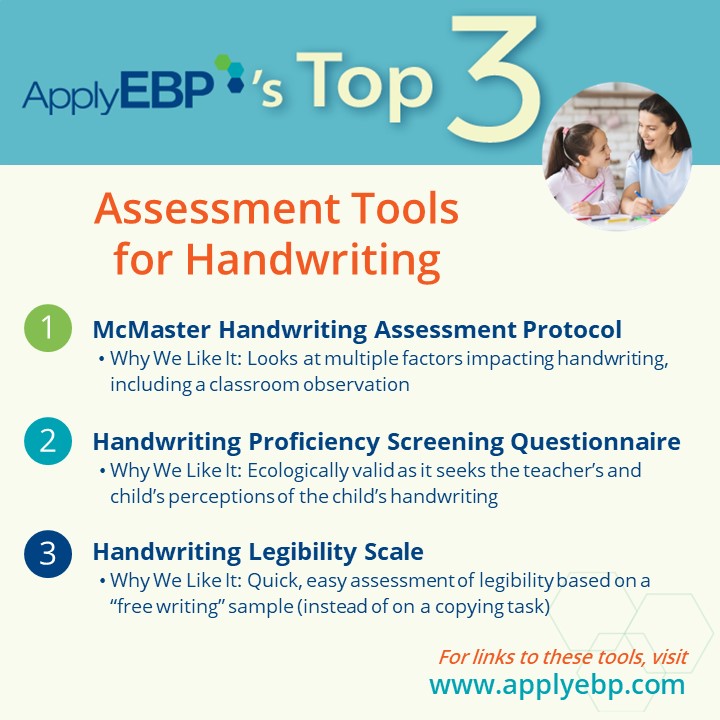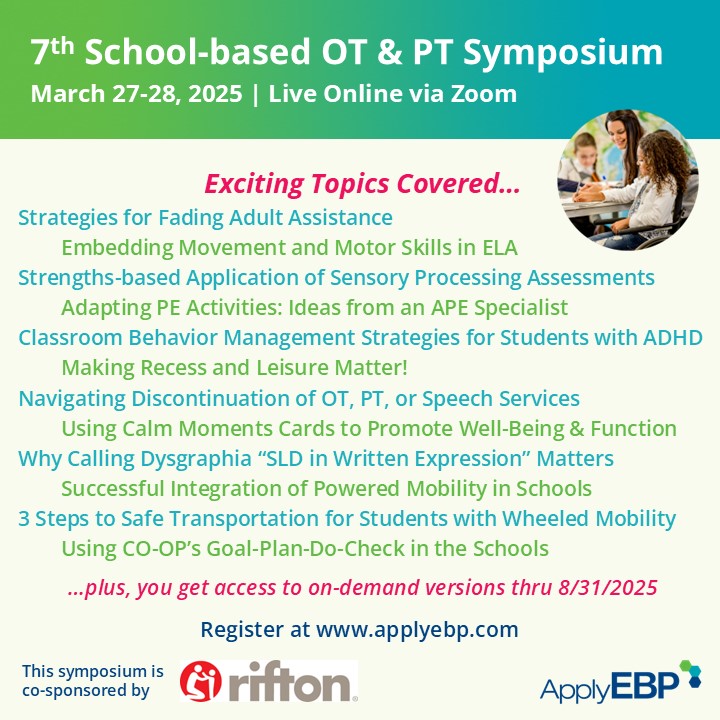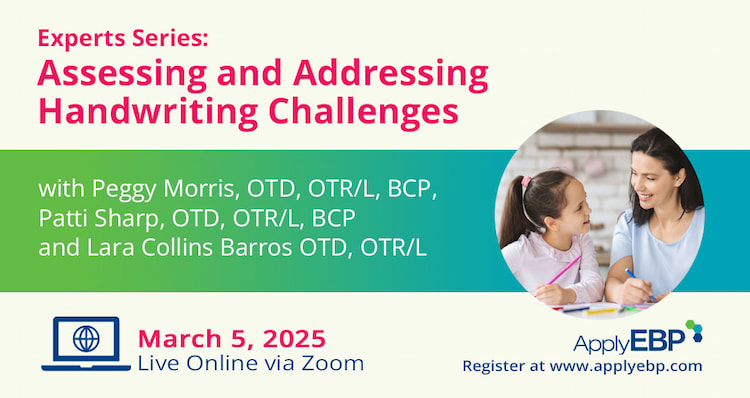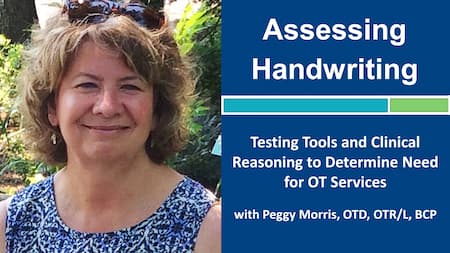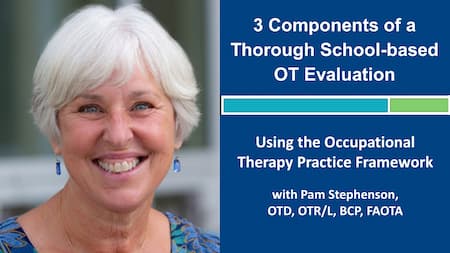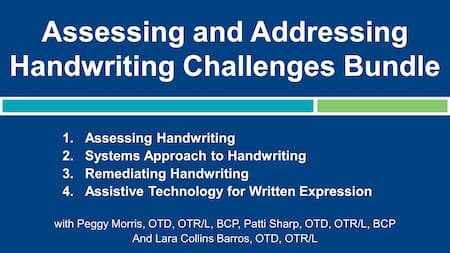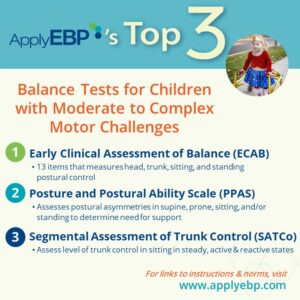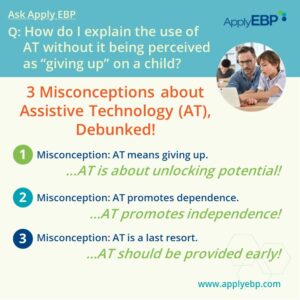Ask Apply EBP
Top 3 Assessment Tools for Handwriting
Note that this article is part of a series of articles on assessment. If you have not done so, first, read this articles:
-
-
-
- Must-Have Test and Organizing Your School-based Assessment – discusses the 5 critical reasons for assessing participation first
- 3 Principles for Selecting Tests – discusses the 3 principles to use when selecting tests at the activity and body function & structure levels
-
-
Q: What are the best tests for…Handwriting?
There are lots of great tests for handwriting. We will veer away from the obvious, more familiar handwriting tests that rely heavily on letter legibility which are time-consuming to administer and score. And instead list our favorite tests that focus on global legibility since the big-picture function of writing is readability, and not necessarily perfect letter-by-letter formation. These tools, in particular, the 2nd and the 3rd on our list are quicker to complete.
1. McMaster Handwriting Assessment Protocol
Why We Like This: The McMaster includes a classroom observation to look at different factors that may impact handwriting beyond just the written product.
-
-
- Test instruction: Click here for the procedures
- Equipment needed: Stopwatch, masking tape, tape measure, writing utensils, paper typically used in class
- Additional reasons for liking this test:
- The manual includes the latest evidence on various aspects of handwriting, from grasp to speed. So in essence, it is both a test and a great source of evidence for our practice!
- It includes samples for writing reports on assessment findings.
- What to note: You buy this test one time. No additional purchases of testing forms needed.
-
A similar tool is the Decoste Writing Protocol. In addition to handwriting, the Decoste looks at other means of written expression, such as typing.
2. Handwriting Proficiency Screening Questionnaire
Why We Like This: To increase the ecological validity of your assessment, this questionnaire takes into account the teacher and the child’s perceptions of the child’s handwriting.
-
-
- For the teacher version: Access the questions in the appendix of this research article
- For the child version: Change the “teacher” questions to the 2nd person. (e.g., “Does the child…” to “Do you…”)
- Additional reasons why we like this test:
- These are quick 10-item questionnaires
- It gives the child a voice in the assessment of their needs; and it can help them understand their difficulties
- The teacher’s and the child’s perceptions, combined with the OTP’s testing, enrich the discussion and decision-making
- What to note: This questionnaire is free if you have access to AOTA’s American Journal of Occupational Therapy.
- One thing we wish: That the questions are stated in positive language.
-
A similar tool is the Here’s How I Write – but this one is not free, and you have to keep on buying the teacher forms.
3. Handwriting Legibility Scale (HLS)
Why We Like this Test: It’s a quick assessment of legibility on a “free writing” sample on lined paper with at least 10 lines of writing.
-
-
- Test instruction and form: Download for free here
- Why we like this test:
- Easy and quick to complete, so it can be a great screener
- Based on the global act of written expression, instead of just copying. Copying can sometimes be just “drawing”, without attachment to actual meaning.
-
To learn more about evidence-informed assessment, decision-making and interventions for join…
References:
Barnett, A. L., Prunty, M., & Rosenblum, S. (2018). Development of the Handwriting Legibility Scale (HLS): A preliminary examination of Reliability and Validity. Research in developmental disabilities, 72, 240-247.
Rosenblum, S. (2008). Development, reliability, and validity of the Handwriting Proficiency Screening Questionnaire (HPSQ). The American Journal of Occupational Therapy, 62(3), 298-307.
Rosenblum, S., & Gafni-Lachter, L. (2015). Handwriting proficiency screening questionnaire for children (HPSQ–C): development, reliability, and validity. The American Journal of Occupational Therapy, 69(3), 6903220030p1-6903220030p9.
Find More Answers to Your Questions in Our...
Featured School
Symposium
Featured Live
Workshop
Featured On-Demand
Webinar
3 Components of a Thorough School-based OT Evaluation
Featured Webinar
Bundle
Assessing and Addressing Handwriting Challenges Bundle
Have a question?
Submit here…
*Clicking submit will send your question directly to our email inbox. Your name and email will let us know that your submission is real (not spam). We will not include these in our posts, unless you tell us to include your name. Please read our privacy policy here.
All infographics and videos on www.applyebp.com are intellectual properties of Apply EBP, LLC
You may use the infographics and videos for free for any non-commercial, educational purposes. Please cite the source as “Apply EBP, LLC” and a link to the source article. If you plan to use any infographic or video for commercial purposes (i.e., for profit), please email Carlo@applyebp.com to obtain a written permission. Permission can be granted on a case-by-case basis.

